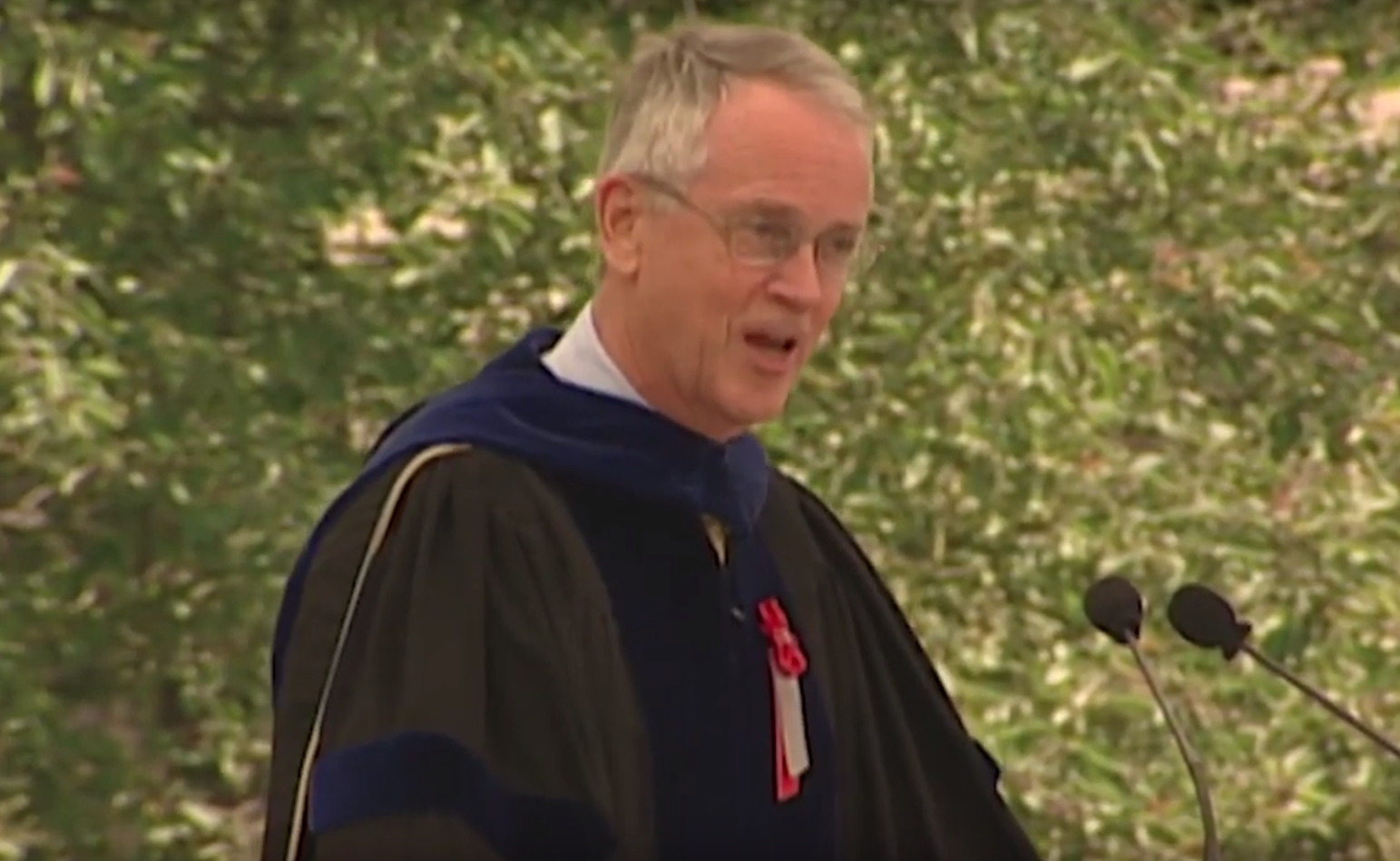Interview with Woodie Flowers: The Origins of the 2.70 Robotics Competition 1/1997
FLOWERS: 270 started in about 1970. At that time, our department head was in charge of the first design course-- Herb Richardson. And we gave the students a creativity kit. And I was a graduate student at the time and worked closely with the students and learned that, for their first design project, it was really hard for them to decide what to do.
So the next year, we decided that we'd give them a kit of materials but give them a very specific thing to try to accomplish. And they got into it immediately, and that sort of got the ball rolling. And 270 began with a very simple contest that involved making the machine go down a hill in three minutes.
Back then, we had about 30 students in the class, and maybe another 15 or 20 people came to watch the contest. And it happened in one of our classrooms. It was a very modest beginning.
Actually, the genesis of the design-and-build part of 270 came from noticing that most kids had never really designed and built and seen Mother Nature evaluate something. So we thought that the design process would best be illustrated by getting them in there and doing it.
The thing that's kind of different about 270 is that it was born a little premature. We started doing it before other folks got into it. But it grew up really strong. And it grew up with a great attitude. The students here make the contest what it is, and they go at it with an enthusiasm and a commitment and a sense of helping one another that's wonderfully unique.
I think the thing that makes the 270 experience quite unique is that, for most of the students, they've never done a really public demonstration of their ability to conceive something and build it. And they kind of give birth to something. And they watch it as it goes out and does its task.
And that's done in a very celebratory environment. The students all know that we'll still love them if the machine doesn't work. But it's done under a great deal of pressure. So the mix of pressure and forgiveness, and the process of really doing something, is a great mix.
One of the things that's important about 270 is that it comes at the end of a great deal of expectation. The students have seen it on television. They know about it. They think about it in advance. And they get into it, and it ends up being a really exciting thing to do, for some reason that I don't really understand.
But building something and launching it out into the world and having it do is really exciting. So they think about it a lot. They work on it really hard. And after it's over, there's a tremendous feeling of satisfaction and relief. And that's an important event in one's life.
One of the ways to think about why 270 is important is to look at Thomas Massie. Thomas came to MIT because when he was in the seventh grade, he saw the 270 contest on television and said, I want to go win that.
And he came to MIT as he was a senior in electrical engineering. He took the course and won the contest. Obviously, lots of kids think about doing that. It's a big deal.
One of the things that's happened is that the culture of the course has evolved in a way that helping one another is one of the core ideas. That came from the students, and we have allowed it to flourish, and it's now part of the core tradition. They learn from one another a lot more than they learn from us. And I really like seeing that happen.
You know, the thing that's really important about the 270 deal is that it's a shared commitment. The students hear from the staff and the faculty that we're going to work hard to make this thing work well. We're going to put a lot of energy into defining the contests so that it's interesting. And we're going to work hard to support you and help you.
And the students respond to that. And they work hard, and they put a lot into it. And that deal, where everyone is agreeing that this is something important, is the key ingredient that makes it work.
I think one of the really nice features of the course is that it gives the students an opportunity to remodel themselves. They discover that they can, in fact, take a chaotic kit of materials and use their creativity and make something wonderful happen. And if you trust your own creativity, you're very likely to have a more satisfying life than otherwise.
I think, probably, the single most important ingredient of a good contest is to make sure that it has been ambivalence-scaled right, so that even the staff or the people that conceived the contest have no idea what's the best solution. So if you balance things properly, then among the people that are talking about it, there's a heavy argument about which way to go. That drives diverse solutions.
In fact, one of the contests that I designed some years ago, called The Potentially Great Race, was terrible because all the solutions looked alike. It was optimizable. It was predictable. And I just didn't see that in advance.
One of my favorite 270 stories centers around a slide that I have of a student looking at her machine as it goes over the top of a sand-covered hill. And it's important because she had come to my office crying. I hate this course. This is terrible. I've never built anything. I'm not going to make a good grade, et cetera.
And she hung in there, did it, her machine did what she wanted it to do. And she ended up becoming a designer. I like that story.
The 270 contest evolved to where it is today. When we first started, it was a simple machine doing a single thing while people watched. And it was quite slow.
After a while, we had machines, side by side, doing things, so you could see some competition. And then, we got interested in, what happens if the machines actually collide in the middle and compete for territory? And from that, we evolved robotically-controlled things, so that they were not automatic, that students were controlling them while they were doing things. And that has become a much more interactive, interesting thing to watch.
Actually, I have two favorites. One was called The Harvest, which involved a wavy table and 300 ping-pong balls. And it was really a wonderfully dramatic contest because of the diverse ways the students approached it.
The other was called The Summit Meeting, which was a mountain and involved raising a ping-pong ball high over the summit of the mountain. And the students built wonderful, tall towers and diverse machines. And they both just worked well.
We all want to be happy. Wise people have pointed out that you can't make people happy by taking away the things that make them unhappy. In this course, many students learn that they can become happy through the satisfaction of being creative.
And that's really a wonderful lesson. Mother Nature applies all of her rules all of the time.
































